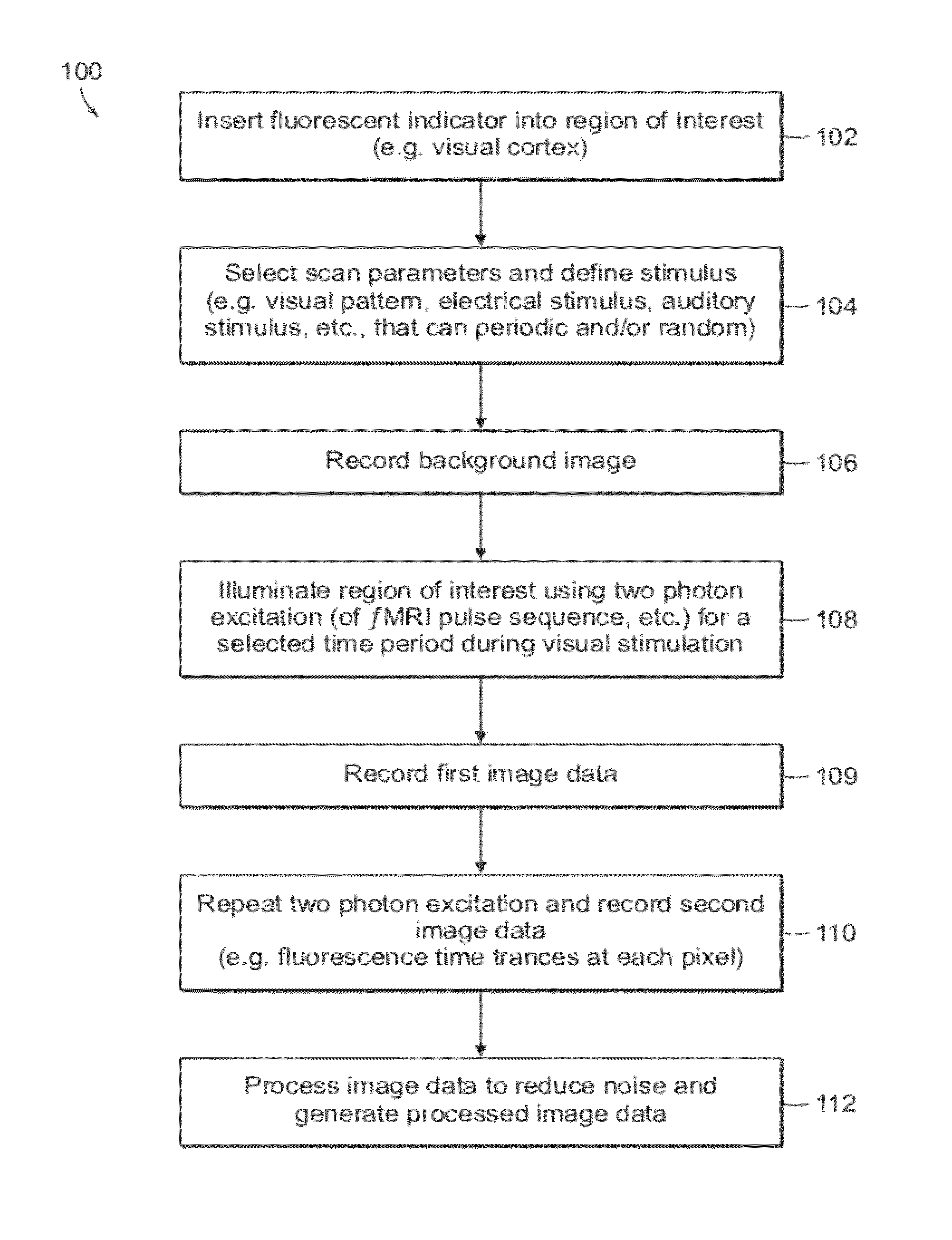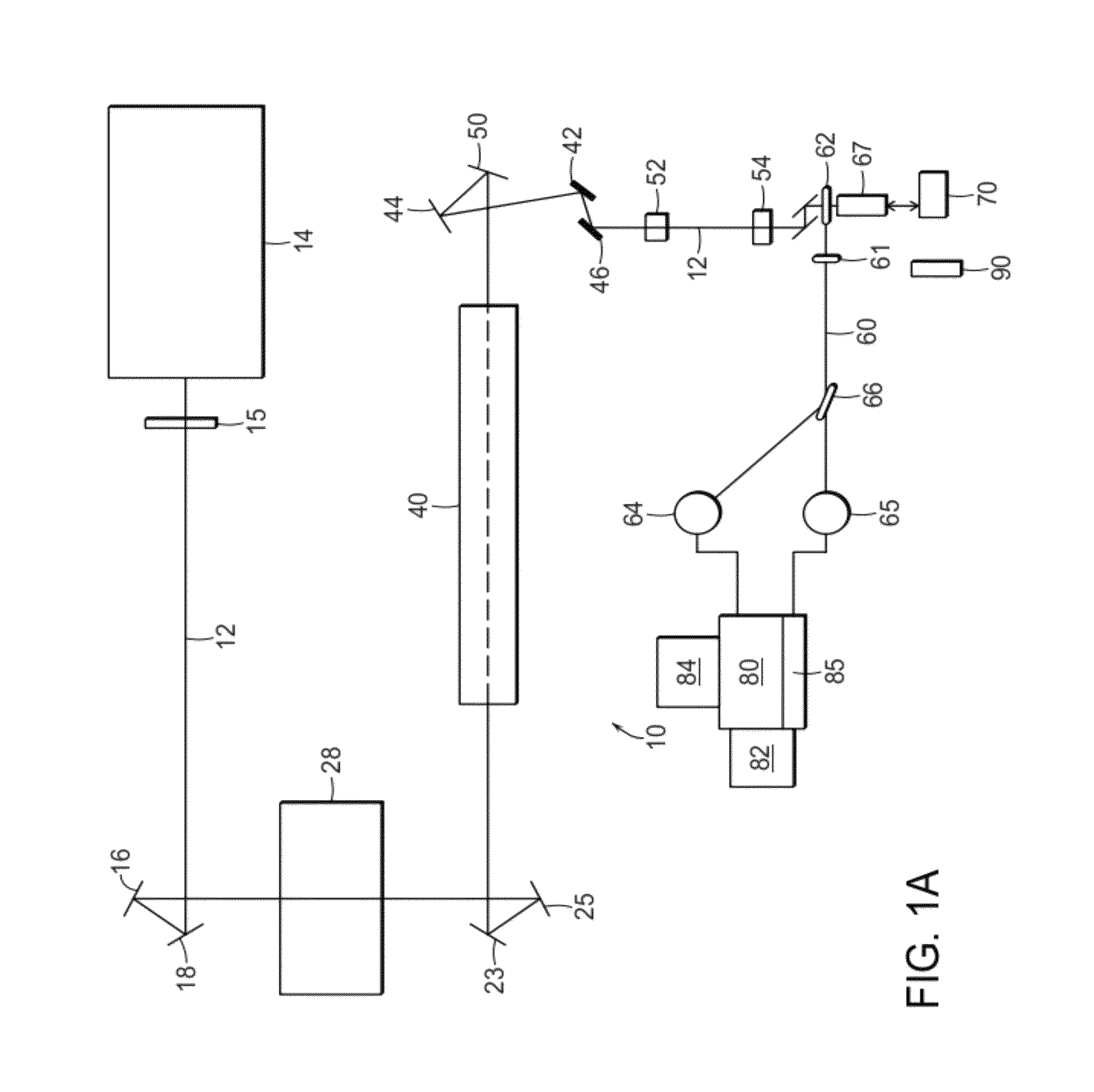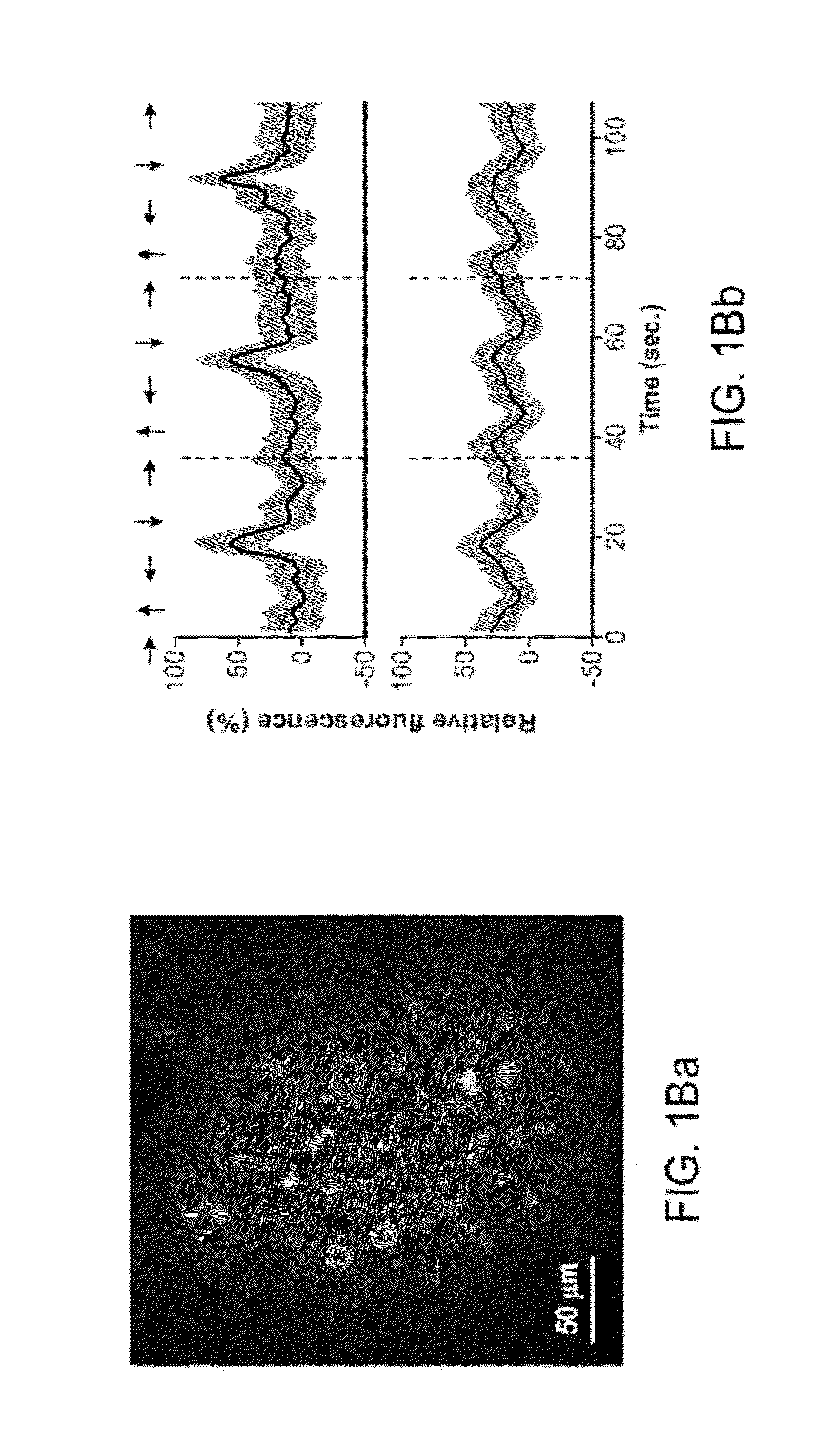Noise reduction of imaging data
a technology for imaging data and noise reduction, applied in the field of noise reduction of imaging data, can solve the problems of requiring a large number of trials, which is often not possible, and achieve the effects of accurate modeling of recorded data, low computational cost, and convenient us
- Summary
- Abstract
- Description
- Claims
- Application Information
AI Technical Summary
Benefits of technology
Problems solved by technology
Method used
Image
Examples
Embodiment Construction
[0023]The present invention relates to systems and methods for processing data measuring the dynamics of systems. Preferred embodiments include systems and methods for measuring the response of biological systems to a stimulus. The measurement of such stimulus typically contains the physiologic response and physiological noise as well as noise from the measurement system.
[0024]Preferred embodiments of the present invention relate to a flexible local likelihood framework for analyzing imaging data. Preferred systems and methods appreciably enhance image contrast on a pixel-by-pixel basis by using an a signal plus colored noise (SCN) model to separate the salient stimulus-evoked neural responses in two-photon imaging data from the complex forms of physiological and recording noise common to such two-photon imaging measurements. A cyclic descent algorithm provides a computationally efficient approach for fitting the SCN model to the time-series of fluorescence responses. This process p...
PUM
 Login to View More
Login to View More Abstract
Description
Claims
Application Information
 Login to View More
Login to View More - R&D
- Intellectual Property
- Life Sciences
- Materials
- Tech Scout
- Unparalleled Data Quality
- Higher Quality Content
- 60% Fewer Hallucinations
Browse by: Latest US Patents, China's latest patents, Technical Efficacy Thesaurus, Application Domain, Technology Topic, Popular Technical Reports.
© 2025 PatSnap. All rights reserved.Legal|Privacy policy|Modern Slavery Act Transparency Statement|Sitemap|About US| Contact US: help@patsnap.com



